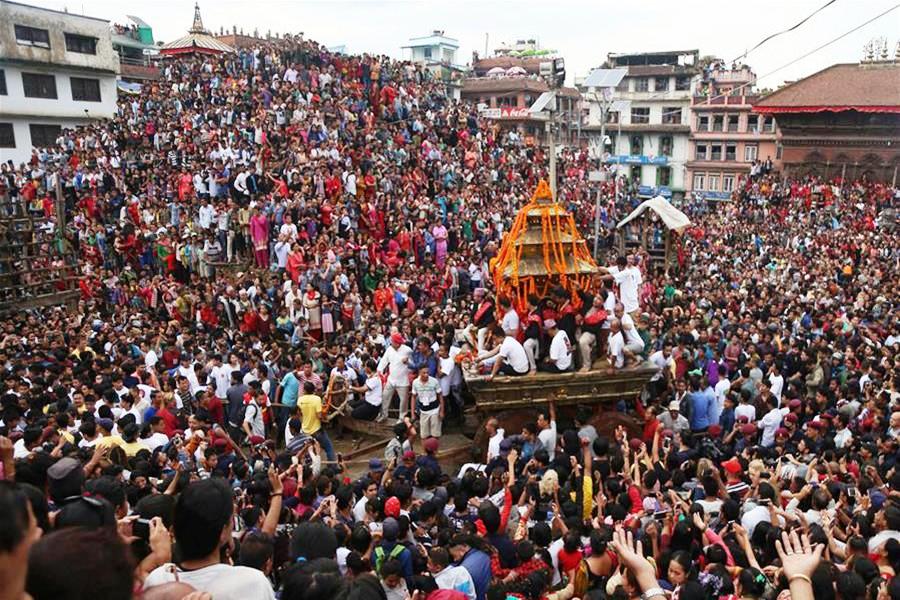

KATHMANDU: In the bustling heart of Kathmandu, it’s not uncommon to see neon-lit cafes hosting Halloween parties in October or Valentine’s Day offers adorning the windows of local stores in February.
Yet, just a few weeks earlier, festivals like Bala Chaturdashi or Indra Jatra might have passed with minimal recognition among the city’s youth.
This growing disparity highlights a cultural shift quietly unfolding across Nepal — one that observers say is replacing age-old traditions with Western trends at an accelerating pace.
Nepal’s festivals, once powerful expressions of spiritual identity and communal values, are increasingly being reshaped by urban lifestyles and global media.
Take Teej, for example. Traditionally observed by women who fast and pray for the well-being of their spouses, it was a festival rich in songs of devotion and ritual significance.
Today, many urban celebrations resemble high-end fashion events, with banquet halls booked weeks in advance for music-filled parties and lavish photoshoots.
Cultural historians and educators have noted that these transformations go beyond harmless modernization. “We are seeing a detachment, not evolution,” said a Kathmandu-based anthropologist. “The meaning behind these traditions is fading, even as the rituals continue in form.”
Dashain, the biggest Hindu festival in Nepal, also reflects this trend. Once a time for family reunions and receiving blessings from elders, Dashain for many now means vacationing, shopping, or engaging with the festival through filtered images on social media rather than deep-rooted participation.
Language, too, has become a marker of shifting priorities. In many private schools, children are discouraged — sometimes even punished — for speaking in their native tongues. English is promoted as a path to success, while local languages are sidelined. Parents often report that their children struggle to converse fluently in Nepali, let alone regional languages like Newar, Maithili, or Tamang.
Clothing choices reflect similar changes. While daura suruwal and gunyu cholo — traditional attire that once symbolized cultural pride — are now mostly seen during formal stage events or photoshoots, Western fashion dominates daily life, weddings, and even religious ceremonies.
Designers note that suits and gowns are now the go-to outfits at receptions and engagements, replacing traditional dress even among older generations.
Marriage customs have not been spared either. Sacred rituals once central to the Nepali wedding ceremony are being abbreviated, simplified, or substituted with civil registrations and destination weddings styled after Western ideals.
The symbolic meaning behind fire rituals, janti processions, or the giving of tika from elders is gradually being lost or reduced to brief mentions in wedding programs.
Meanwhile, Western festivals like Christmas, Halloween, and Valentine’s Day have surged in popularity — especially among urban youth. Schools organize themed events, businesses run promotional campaigns, and social media is flooded with content celebrating these global observances. While such participation can reflect global integration, many cultural experts warn that this enthusiasm is not being matched by similar interest in local traditions.
“We’re not against celebrating global culture,” said a cultural preservation advocate. “But what concerns us is the imbalance — the clear prioritization of imported celebrations while our own are being sidelined or forgotten.”
This shift is not unique to Nepal, as many countries face similar cultural crossroads in a globalized world. However, stakeholders worry that Nepal is losing not just traditions, but the sense of identity that comes with them. Without intervention, they warn, future generations may grow up unaware of the very customs and values that shaped the nation for centuries.
To address this, experts and educators have called for renewed emphasis on cultural education in schools. They advocate for integrating local history, language, and traditions into core curricula rather than relegating them to extracurricular status.
Similarly, media outlets and content creators are being urged to use their platforms to promote Nepali stories, attire, and rituals with authenticity and pride.
Government policy also has a role to play. Initiatives that promote the use of local languages, protect heritage sites, and support traditional artisans could offer long-term reinforcement of cultural identity. But most experts agree: the responsibility starts at home.
“Culture is lived, not legislated,” said one educator. “It lives in the language we speak to our children, the rituals we observe with our families, and the choices we make — from what we wear to how we celebrate.”
In a rapidly modernizing society, Nepal finds itself balancing on a cultural tightrope. As it reaches for progress and global integration, the challenge will be to hold onto the roots that define it — not as relics of the past, but as living elements of identity, memory, and meaning. Whether those roots endure may ultimately depend not on policy or institutions, but on everyday choices made by individuals, families, and communities.